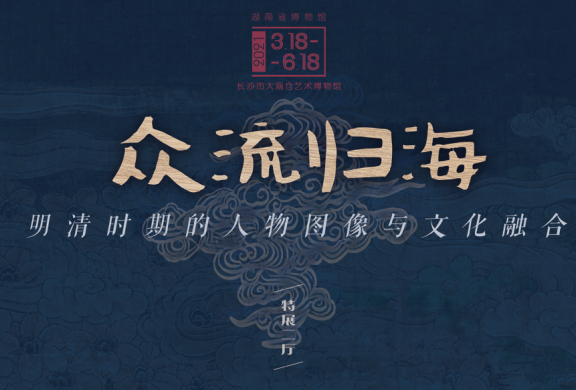Past Exhibitions
Our Asia:Ancient Asian Civilizations ExhibitionNo.2 Special Exhibition Hall, 1F 2021.07.05 - 2021.10.08 |
Red Spirit Flourished in the Land of Heroes: Exhibition of Revolutionary Cultural Relics collected in the Hunan MuseumNo.1 Exhibition Hall, 1F 2021.06.24 - 2021.10.31 Hunan Province boasts its abundance of red revolutionary cultural resources, so much so that it seems to be a revolutionary history museum without walls. In September 2020, general secretary Xi Jinping inspected Hunan and praised the province, saying that "one can find revolutionary site in nearly every 10 steps", "soaked in the blood of the Red Army, the soil witnessed the revolutionary martyrs’ heroic sacrifice". The year of 2021 marks the 100th anniversary of the founding of the Communist Party of China. To celebrate the centenary of the founding of the CPC, the Hunan Museum launches the original exhibition, namely Red Spirit Flourished in the Land of Heroes: Special Exhibition of Revolutionary Cultural Relics collected in the Hunan Museum. This exhibition follows the history of the revolution of the CPC in Hunan. To educate, impress, and inspire more people, we dig into stories behind the cultural objects to better interpret the cultural connotation and the value of the times embodied in the cultural relics while showcasing the revolutionary spirit and noble characters of people with lofty ideals in four units, namely "The Tide Riders Surf the Currents", "A Million Workers and Peasants Rise Up", "All Around Heroes Home-bound in the Evening Mist" and "Bitter Sacrifice Strengthens Bold Resolve". |
The Artworks of the Wang School: Wang kaiyun and his disciplesThemed Exhibition Hall, 3F 2021.06.11 - 2022.06.11 The Artworks of the Wang School: Wang KaiYun and his disciples Wang Kaiyun, a famous scholar in Hunan, with friends and disciples all over the world, was known as the leading scholar of the times. He strongly advocated to put the classics into practice, and cultivated many outstanding students studying real problems, such as Yang Du, Yang Zhuang, Yang Jun, Xia Shoutian, Qi Baishi, Bazhi Toutuo, Song Yuren, Yang Rui, Liao Ping, Hu Yuanyi, Yi Shunding, Liu Kuiyi, Ma Zonghuo, etc. To express the gratitude and nostalgia to his teacher, Qi Baishi once wrote a poem: “I often recall the past and miss my beloved teachers and old friends, but the past is gone forever. ” In the modern history of China, there are many achievements made by Wang's disciples. Many talents in Hunan Province of modern times and the revival of Bashu culture are inseparable from Wang Kaiyun's elaborate cultivation. The Hunan Museum has a rich collection of letters, paintings and calligraphy of celebrities in Hunan Province since the Ming and Qing Dynasties, and the museum carefully selected more than 100 pieces (sets) from the works of Wang Kaiyun and his disciples for display, including calligraphy, painting, seals, diaries, manuscripts, letters and so on, most of which are shown in the first time. Those precious exhibitions not only have important literary and historical value, but also embody the aesthetic value of scholars, which can be called as a feast of academic exchange and art appreciation. It is hoped that through this exhibition, we can go through the time tunnel to read the stories of Wang’s school and learn Wang Kaiyun’ s and his disciples’ achievements embodying the philosophy of taking the rise and fall of society as their responsibility and studying real problems, and sort out the unique cultural heritage system of Hunan Province in the late Qing Dynasty and the Republic of China period, so as to further promote the study of Huxiang culture in academic and art circles. |
Exhibition of Taoyuan WoodcarvingsNo.1 Exhibition Hall, 1st Floor 2021.05.18 - 2021.06.14 The Exhibition of Taoyuan woodcarvings is an original special exhibition focusing on the local culture of Hunan Province hosted by the Hunan Museum. With over 200 pieces (sets) of fine woodcarvings from private and public collections, the exhibition presented the concave-convex art of woodcarving to visitors through the visual display of the technical characteristics, artistic style, and function of woodcarving. Taoyuan woodcarving, with its fresh vitality, rich flavor of life, unique etiquette and symbolic significance, reflects the aesthetic appeal, spiritual belief and personality traits of the people in this area. It not only inherits the essence of Chinese traditional culture, but also adds wonderful local characteristics to the cultural patterns of pluralistic integration, enriching the Chinese civilization of harmonious coexistence with difference, and highlighting the crystallization of the collective wisdom and cultural confidence of Taoyuan people. Let's start with Taoyuan woodcarving, tell the story of Taoyuan featuring a long history, cultural prosperity and simple folk customs and observe the spiritual pursuit, hard work and ingenuity of the people in Hunan in the process of creating a better life. |
Figure paintings and culture integration in the Ming and Qing DynastiesNo.2 Special Exhibition Hall, 1F 2021.03.08 - 2021.06.18 Confucianism, Taoism and Buddhism are regarded as three complementary knowledge systems and cultural sources of Chinese traditional culture. From the Pre-Qin Period to the Han Dynasty, they have developed from mutual exclusion into absorption, and then into the overall integration while moving towards unity via continuous historical interactions. Later, during the Ming and Qing Dynasties, the Three Teachings integrated their philosophies in material forms when keeping respective traditions alive. The integration was best manifested by the popularity of figure paintings, statues, sculptures, and literary images. As interrelated visual cultures, the artworks serve as an overview of the important historical features of social culture, aesthetic taste, as well as the secularized and normalized spiritual life in the Ming and Qing Dynasties. Rooted deep in history like “cultural genes”, they have influenced China and even the whole Oriental culture in a universal and profound way. Chinese people believe that “The sea receives all rivers; Utmost wit listens to all sides”. As we can see, in the Ming and Qing Dynasties, Confucianism, Taoism and Buddhism’s maintenance of relative independence and the state of confluence is also made possible by their pursuit of openness, inclusiveness, and harmonious coexistence. Meanwhile, the internal transcendence embodied in the integration and development of the Three Teachings endows Chinese culture with a character of seeking self-innovation and being in tune with the times, which has become the cultural code for it to grow and prosper for thousands of years. It is hoped that this exhibition can provide people with an opportunity to look back on the cultural origin of the Chinese nation and explore the contemporary value of outstanding traditional culture, thus separating the wheat from the chaff and making the past serve the present. With this in mind, we can build a social consensus on and inject spiritual momentum for developing Chinese culture and practicing socialist core values. |
Blossoms in Fairyland-Exhibition of the Taoyuan Embroidery in the Qing Dynasty and the Republic of China PeriodNo.1 Exhibition Hall, 1st Floor 2021.03.06 - 2021.05.03 Blossoms in Fairyland-Exhibition of the Taoyuan Embroidery in the Qing Dynasty and the Republic of China period is one of “Taoyuan Craftsmanship” series exhibition, which presenting the embroidery works. The series exhibition including embroidery and wood carving two parts is jointly hosted by the Hunan Museum and the Taoyuan County government. It is the first exhibition jointly held by the Hunan Museum and a local government. The series exhibition of “Taoyuan Craftsmanship” starts with the Taoyuan embroidery and wood carving in the Qing Dynasty and the Republic of China period, aiming to reflect the profound Huxiang regional civilization. It is the first work of “Hunan Regional Civilization Series” exhibition held by the Hunan museum. Blossoms in Fairyland-Exhibition of the Taoyuan Embroidery in the Qing Dynasty and the Republic of China period carefully selected more than 170 pieces (sets) of Taoyuan embroideries from public and private collections in the Qing Dynasty and the Republic of China period. With the visual display of the subjects, patterns, skills, techniques and functions of embroideries, the exhibition aims to accurately interpret Taoyuan embroidery's exquisite skills, profound attainments, unique artistic characteristics and long-standing folk customs and rituals, interpret the unique aesthetic taste of the people in Taoyuan area, and glimpse the industrious wisdom and spiritual pursuit of the people in Hunan Area in the process of creating a better life, so as to help visitors to appreciate the unique charm of Hunan regional culture. |








